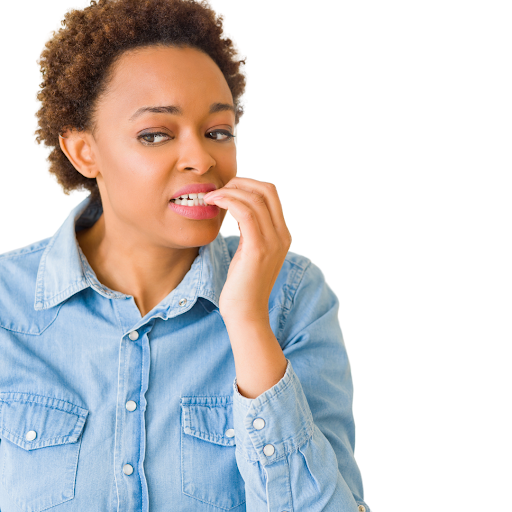Routines and habits can structure our day and bring consistency, stability, and comfort to our daily experience. Because these actions happen frequently, their nature can either be beneficial or detrimental to our health. Dental health habits, such as teeth brushing and flossing, are examples of “healthy habits” that we’re all familiar with for good reason. Braces can change the manner and technique in which you continue your dental regime, but oral health should remain a top priority for everyone whether they are in the midst of orthodontic treatment or not.
Habits are formed based on a 3 part action reward loop in the brain. Step one is a trigger that begins the process (which is why routines are helpful in modifying behaviors) This trigger brings about step 2, an automatic behavior that the brain associates with the 3rd process, our reward. The prefrontal cortex is the part of the brain that is associated with decision-making. Once something becomes a habit, usually, after around an average of about 65 days, practiced behaviors move to a new control center in the brain. This change of hands moves the command of actions from a decision-based center to the Basal ganglia, which initiates and guides memory development, emotional regulation, and pattern recognition. In essence, these actions go from purposeful action to automatic responses. This is the brain’s way of conserving energy, improving efficiency, and providing space to focus on new projects. Because of this mechanism, habits can be a powerful tool of change. Depending on the nature of the behavior, this can have a negative or positive impact on your health.

Nail or Object Biting
Nail-biting is a common behavior that psychologists are still figuring out the cause of. The bottom line is that biting your nails brings a type of mini dose of escape and relaxation, and for many, this reward loop leads to a habit that can cause damage to your nails and teeth. Prolonged and consistent nail-biting can contribute to chipped teeth, poor jaw positioning, and TMJ issues, not to mention unsightly and tender nail beds. As far as orthodontics is concerned, nail-biting can lead to broken brackets and wires and therefore, more frequent than necessary appointments and slowed progress. Quitting this habit is particularly difficult because your nails are conveniently and permanently accessible at the tips of your fingers. Gum can help keep your mouth busy, especially if you chew pens or other objects.
Nail polish and manicures are one method of combating nail-biting. A wonderful choice for nail-biting patients is choosing clear aligners, like Invisalign. You can’t bite your nails with trays in, so count that kicked habit as a bonus treatment.

Thumb and Finger Sucking
It’s normal and healthy for babies and toddlers, but if the finger habit doesn’t naturally fade out, it can cause a host of issues. Because it starts young, persistent thumb sucking can cause problems with jaw formation, tooth alignment, speech development, and even facial structure and shape formation. This habit often secretly follows patients well into adulthood. A skilled orthodontist can spot thumb and finger sucking habits quickly due to its characteristic signs, especially with palate development.
If a child is still frequently and forcefully sucking their thumb or fingers, it’s time for intervention to avoid long-term problems. Again, with fingers being easily and permanently accessible, finger sucking is a difficult habit to break. Reminders and distractions are sometimes all it takes, sometimes bitter polish applications or gloves are used to assist. If the impulse is too strong, an orthodontist can help by providing a custom-fitted thumb sucking device that helps break the habit by making it impossible to create suction around the thumb. Beginning this intervention is one reason we recommend early orthodontic checks starting at age 7.
Tongue Thrust
It’s a subtle, unconscious habit that is more about a faulty swallowing technique than a learned, pleasurable habit. Typically, swallowing properly is a naturally occurring instinct however, tongue movement in the mouth is complex, and therefore, difficult to get right for some, leading to speech disorders and or tongue thrust. In the case of tongue thrust, the tongue pushes forward against the teeth with every swallow and the constant pressure eventually causes malalignment. Since bodily functions like swallowing are partly controlled by the basal ganglia we “don’t think” about how we swallow, and if improper mechanics are adopted, the habit is hard to change. We refer our patients struggling with tongue thrust to an experienced speech therapist who can teach and give exercises to practice to correct the technique. The exercises can be practiced in conjunction with braces or Invisalign so when treatment is finished, the habit is already corrected.
Clenching and Grinding
A common problem that leads to headaches, jaw tension, and pain for many, clenching and grinding, can sometimes contribute to a Temporomandibular Joint, or TMJ disorder. Whether made by your orthodontist, dentist or bought over the counter, mouth guards that extend over the back teeth can help by reducing stress to the TMJ and preventing enamel wear. A misaligned occlusion, or “bad bite,” can sometimes increase the frequency of clenching and worsen problems. That being said, many times orthodontic aspects aren’t the cause of the problem, and although we always like to make teeth look perfect, treatment with braces will not always help on its own. Physical therapy is another treatment that we recommend and in serious cases, a trip to your doctor for help with anxiety is warranted.

Smoking
Staining, disease, bad breath…smoking is bad. Are we all in agreement? Ok, let’s move on.
Frequent Snacking
Sipping coffee, sugary drinks, and snacking throughout the day is not good for several reasons, but as far as teeth are concerned, if staining and cavities are your main goals, you’re on the right path. It’s hard, I’m sipping coffee as I type, but it’s very important to at least rinse after eating or drinking and give your teeth time to rest and reset. Yes, it sounds weird but teeth are going through microscopic changes on the surface after you eat and are susceptible to bacteria. Because you have to take them off before eating or drinking, aligners, like Invisalign, can be helpful by dissuading you from snacking by making it more work. Alternatively, your sipping/snacking habit can overpower you, cause you to neglect tray wear, and become detrimental to your orthodontic success. It is important to evaluate and consider this habit before committing to aligners.
Slacking on Hygiene
The big ones: forgetting or skipping brushing and flossing. Everyone has their routines, or lack thereof, most probably don’t do it enough. Also brushing too hard with a firm toothbrush is not good for gum health or enamel. The ADA recommends brushing at least twice a day with a soft toothbrush and flossing daily. After getting braces on we recommend adding a quick brush after eating, especially if you are in Invisalign. Remember that forming habits takes time, but once it moves over to the habit center in the brain, it hardly takes any thought at all – an automatic response to a cue. So, take the time to fit dental hygiene into your daily routine and it will become a habit in no time!




